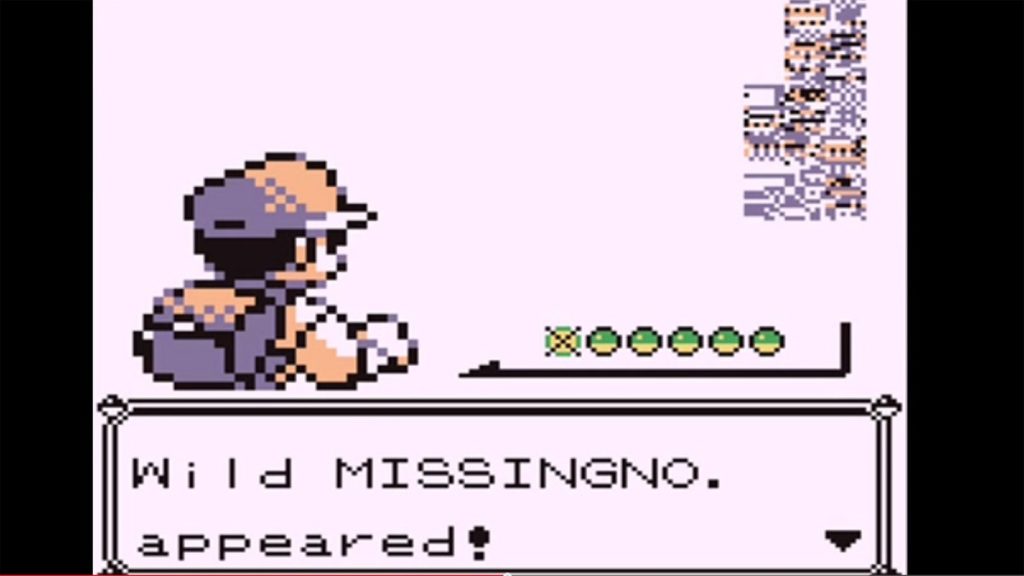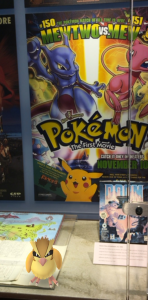
When Karl Marx said history repeats itself, I don’t think he had Pokémon in mind.
The latest entry in Nintendo’s 20-year Pokémon franchise, Pokémon Go hit the App Store on July 6 and instantly became the most popular mobile game in the world. It surpassed blockbuster titles like Slither.io, Clash Royale, and Candy Crush within a mere 24 hours,1 causing Nintendo’s market value in Japan to grow by $7.5 billion.2 Excitement about the game pervades social media, ranging from photos of monster sightings, play-by-play recaps of mobile battles, and insults hurled between the various teams and factions present within the game world. But, despite the generally positive (dare I say rapturous?) reception to the game, plenty of Poké-doubters, surprised at the success of the “fad,” are already predicting the game’s eventual demise.
The same thing happened when Pokémon Red and Pokémon Blue arrived stateside in 1998: every Millennial with even a slight interest in gaming (including yours truly) went into a collective frenzy. We bought the games, marathoned the anime, played the card game, purchased the auxiliary merchandise, and eagerly awaited additional entries in the franchise. Parents, teachers, and even South Park dismissed it as a phase that would eventually pass. But here we are, 20 years removed from the release of the first Pokémon game in Japan, having the same discussion about the same property.

The games only make up one small component of the Pokémon empire. TV shows, movies, and, in particular, card games also contribute substantially to the franchise’s market share.
During those two decades, Pokémon grew from a project pitched to Nintendo by Game Freak (a company that started as a gaming magazine, not a developer) into the most financially successful video game franchise in history. Full stop, no hyperbole. As of May 2016, over 280 million copies of Pokémon games have been sold and, including all Pokémon-related merchandise (movies, TV shows, card games, and licensed products) the franchise possesses a market share of ¥4.8 trillion.3 Pokémon could be the Star Wars of video games, folks. It may never go away if Niantic (Pokémon Go’s developer) plays its cards right and continues to update and tweak its product. This new app could be a force on mobile platforms for years to come.
For the uninitiated, Pokémon is a series of games, typically played on handheld Nintendo consoles (like the Gameboy or DS), where players take on the role of Pokémon Trainers, collecting, leveling up, and evolving the eponymous monsters to do battle with other Trainers around the world. The franchise borrows elements from role-playing games, adventure games, and turn-based strategy games. In short, there’s something for practically everyone in this series.

The original in-game sprite for the 151st Pokémon, Mew.
In some ways it’s surprising that the franchise achieved the level of success it did. As you’d expect from a novice game developer, Game Freak’s first entries in the series were, to put it kindly, not polished. The in-game art was sub-par, the mechanics poorly balanced, and the code riddled with bugs and exploits that could easily corrupt your game cartridge and erase all your data.
One might assume Pokémon achieved its success in spite of these issues, but I’d argue that these glitches actually helped the game reach the heights that it did. It was a perfect storm of quirks and bugs: they were all obvious (even to a child), but none of them came close to ruining the experience of the game. On the contrary, I think the problems inherent with the original games on release gave the product a wholesome quality. Some of the defects actually led to urban legends developing around the game that kids everywhere discussed in hushed tones. The end-result made Pokémon feel like a low-budget labor of love. It seemed almost like a game developed by kids and for kids. In reality, the original Pokémon was a product by gamers for gamers, and it hit every button that makes us love the hobby.

MissingNo. is a glitch Pokémon, the result when the first few iterations in the series tried to access a Pokémon species that doesn’t exist. They were very easy to encounter and led to a number of game-breaking exploits and glitches.
That brings me to Pokémon Go and what differentiates it from the rest of the franchise. Many of the elements of the originals remain firmly in place: the player still takes on the role of a Pokémon Trainer who collects and battles Pokémon throughout the world. However, some of the elements are simplified and de-emphasized for mobile platforms. While the main franchise revolves around battling Pokémon, Pokémon catching and collecting take center stage in Pokémon Go. Battles have been stripped of the strategy present in the main series, and Pokémon grow in strength, not when they participate in combat, but when the Trainer catches extra copies of monsters. In traditional iterations in the series, it’s possible to build a single team early on and keep that team together throughout the game. That’s not feasible in Pokémon Go, and I’d argue that the game is poorer for it.
Gameplay mechanics aside, what truly distinguishes Pokémon Go from every other entry in the series is the fact that Go represents Pokémon’s first foray into the realm of augmented reality, and neither mobile gaming nor marketing will ever be the same again. Pokémon Go takes place in the real world; it monitors the player’s location using GPS and, when the app is running, the user has a chance to encounter a wild Pokémon. The game determines the type of Pokémon based on the player’s location (for example, if a Trainer is near water there is a higher chance a water-dwelling Pokémon will appear than if he or she is in the middle of a desert). Once the Pokémon materializes, the Trainer uses the interface to throw a Poké Ball at it to capture it and add it to his or her team. And, thanks to the built-in camera in mobile phones, when someone encounters a Pokémon in Pokémon Go, the phone allows the Trainer to see the monster standing right in front of him or her.
While Pokémon Go isn’t the world’s first augmented reality game (it isn’t even Niantic’s first attempt—that title belongs to the 2013 game Ingress), it is the first game of its kind to be adopted on this scale, which has led to an immersive experience unprecedented in gaming. Suddenly the real world and the setting for a video game are one in the same and, because the app is a free download, tens of millions of people can share that experience at once. These monsters appear for every player in the same place at the same time and the battlegrounds and shops can be accessed by anyone. So, while the monsters and features are digital, because of the communal and persistent nature of Pokémon Go, we’re getting to the point in gaming where lines between fiction and reality are truly starting to blur.
Marketing opportunities abound thanks to Pokémon Go. For the first time, businesses around the world have begun advertising campaigns based on the digital monsters that dwell on their property. “Come shop here and you might encounter a Pikachu!” is a phrase vendors can use without a hint of shame, irony, or, apparently, copyright infringement. Businesses have begun dropping “Pokémon lures,” which attract the digital monsters, in their businesses to draw Pokémon, and thereby additional foot traffic, into the premises. One New York pizzeria has reported at least a 75 percent increase in its business since they began that practice.2

There have even been Pokémon sightings at the Computer History Museum! Here’s a Pidgey that was, ironically, found near the Pokémon display in CHM’s Revolution exhibit.
However, not every organization delights in its newfound traffic. Because of the increasingly global nature of Pokémon Go, the monsters can be found everywhere, and the game does take into account any impropriety that could arise from hoards of Pokémon Trainers flocking to certain locations. The two most publicized examples, the Holocaust Memorial Museum and Auschwitz Memorial, have found their patrons hunting for monsters instead of paying respects to the victims of Nazism.4 They’ve requested that Niantic make their locations incompatible with Pokémon Go, but, as of this writing, the developer has been unable to comply.
However, because the vast majority of businesses are ecstatic with their spike in visitors, Niantic quickly recognized the sponsorship opportunities with local businesses and already offers deals to companies that want to shape how their locations interact with Pokémon Go’s digital world.5 Vendors can pay to become a Pokémon Gym (battleground for battling monsters) or a Pokéstop (a digital store to obtain Trainer gear) and, doubtless, will soon be able to select the monsters that roam their buildings. Considering the potential financial benefits here, expect to see plenty of games copying Pokémon Go’s_ formula.
So, while Pokémon Go is not a perfect game, it can’t be considered anything but a colossal triumph for Niantic, the Pokémon franchise, augmented reality, and Pokémon fans around the world. This new game has given every Pokémon player something they’ve wanted (whether they admit it or not) for nearly 20 years: a chance to live in a world inhabited by Pokémon. So, I grant you, the game isn’t perfect, but remember the original Pokémon wasn’t perfect with its first release.
And you know what? That just might be what makes it great.
The video game wing of CHM’s Revolution exhibition is an ideal place for aspiring Pokémon Masters to test their mettle and build their teams! Patrons at the Museum have reported dozens of types Pokémon within the exhibit and there are even two Pokéstops on site. Follow our Twitter @ComputerHistory to find out when we’re setting up our Lures!